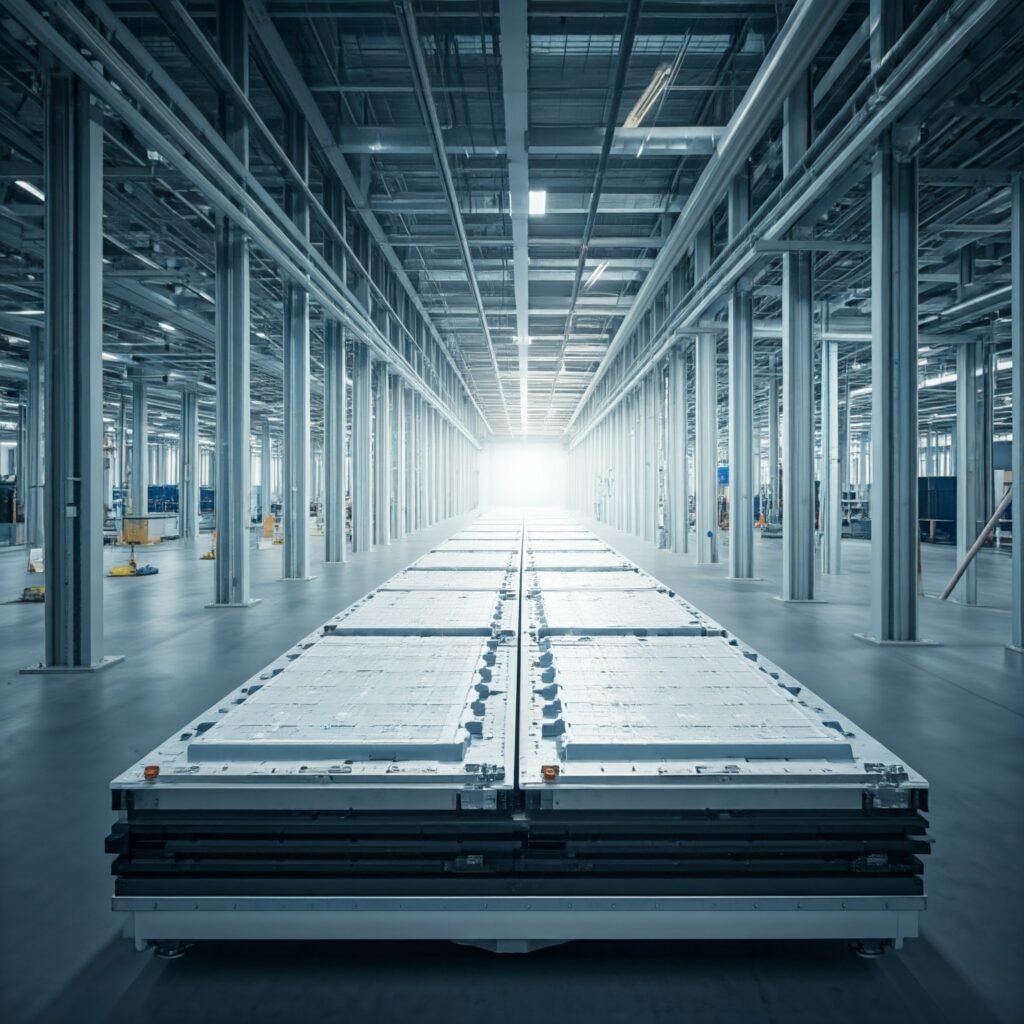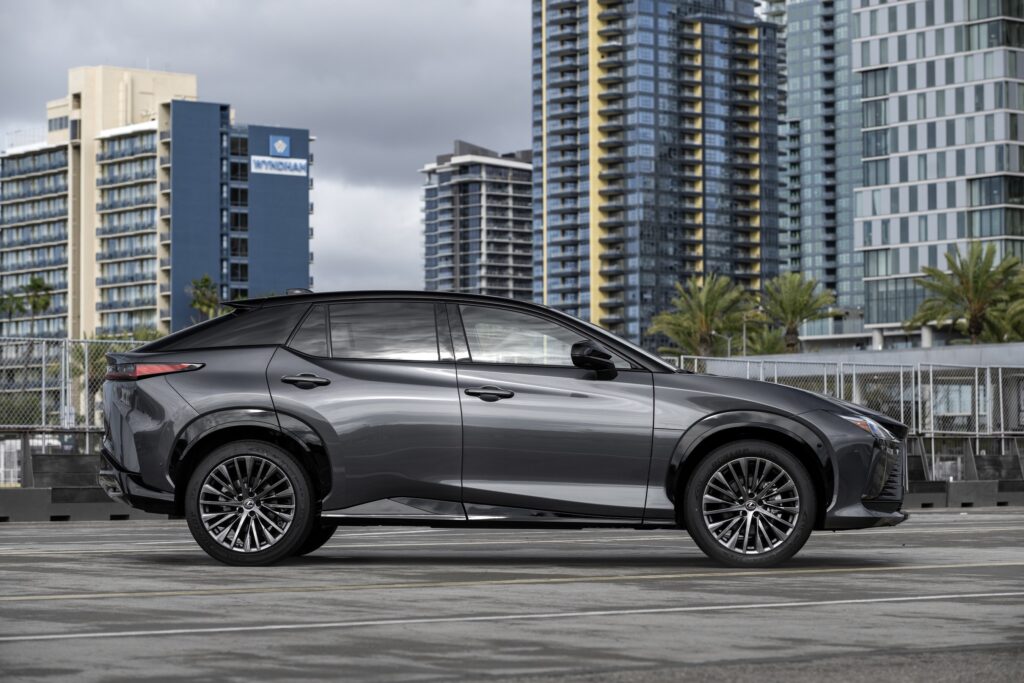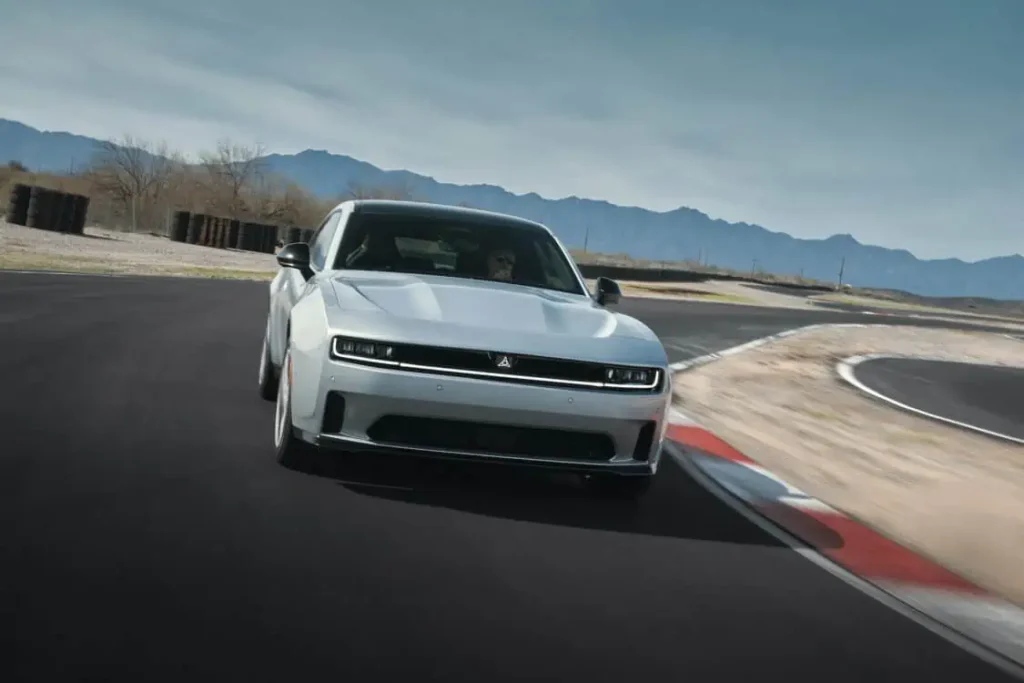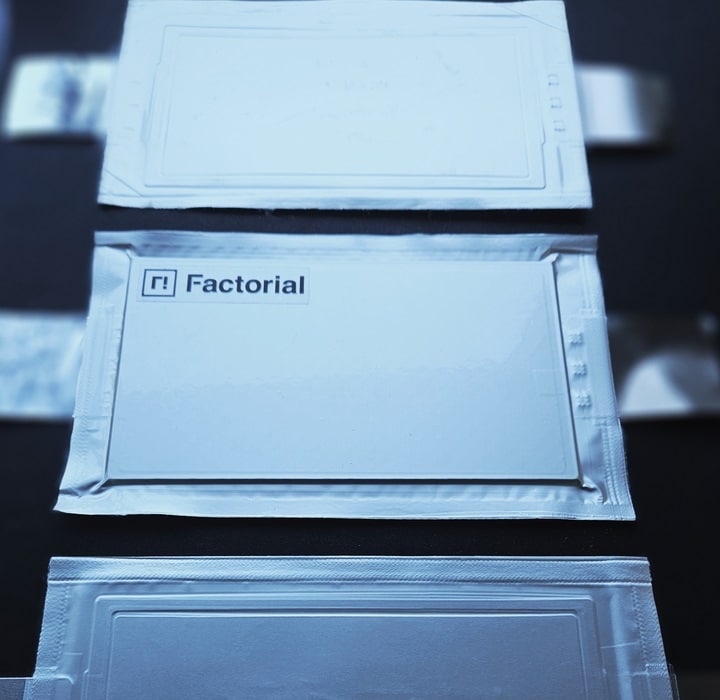Will Honda Win the Solid State EV Battery Race?
On November 21, 2024, Reuters reported that Honda Motor Co. plans to double the driving range of its electric vehicles (EVs) by the late 2020s through the adoption of all-solid-state batteries, according to Keiji Otsu, president of Honda R&D. All-solid-state batteries, which replace the liquid electrolytes in conventional lithium-ion batteries with a solid electrolyte, are expected to significantly enhance energy density and safety.
By integrating this cutting-edge battery technology, Honda aims to deliver EVs with twice the driving range by the end of this decade and over 2.5 times the range by the 2040s.
“It’s a game-changer of the EV era,” Otsu told reporters at Honda’s pilot all-solid-state battery production line in Tochigi north of Tokyo. Honda is investing 43 billion yen ($277 million) in the pilot line, nearly half of which is funded with Japanese government subsidies.

All-solid-state batteries can store more energy in a smaller space, enabling longer driving ranges, and their design reduces safety risks, such as the potential for fires and thermal runaway. Additionally, solid-state batteries are expected to become more cost-effective over time.
Honda is set to begin operating a pilot production line for all-solid-state batteries in January, marking a significant step in its efforts to revolutionize electric vehicle (EV) technology. According to Otsu, the company aims to achieve substantial improvements in battery performance within the next five years. These include a 50% reduction in battery size, a 35% decrease in weight, and a 25% reduction in costs compared to current lithium-ion batteries.
The facility, in Sakura City, Tochigi Prefecture, Japan, spans approximately 27,400 m² (295,000 ft²), and is designed to replicate the processes needed for large-scale manufacturing. It is equipped with advanced machinery to verify critical production stages, such as the preparation of electrode materials, electrode assembly using coating and roll pressing, cell formation, and module assembly. Construction of the facility was completed in the spring of 2024, and with most of the key equipment now installed, Honda plans to begin production on this line in January 2025. This phase will focus on refining mass production techniques, optimizing costs, and finalizing battery cell specifications.
The production process incorporates a roll-pressing technique adapted from liquid lithium-ion battery manufacturing, specifically tailored to solid-state batteries. This method increases the density of the solid electrolyte layers and improves interfacial contact between the electrolyte and electrodes, enhancing overall productivity. By streamlining assembly processes and accelerating electrode bonding, Honda aims to significantly reduce production time for each cell. To further improve efficiency, the company is implementing measures to cut indirect production costs, such as minimizing energy use through advanced production control technologies that optimize the low-dew-point environment required for safety and performance.
Honda is also focused on ramping up its EV production, with plans to manufacture over 2 million units annually by 2030. This aligns with its broader sustainability goals, which include achieving a global sales ratio of 40% for EVs and fuel cell vehicles by 2030, and transitioning entirely to zero-emission vehicles by 2040.
Nissan Motor, Honda’s strategic partner, is also advancing its development of all-solid-state batteries, with plans to initiate operations on its pilot production line in March. Honda’s Otsu hinted at potential collaboration between the two companies, particularly in areas such as joint materials procurement, which could streamline development and reduce costs. Otsu further indicated Honda’s openness to selling its solid-state batteries to external parties if it proves mutually beneficial.
Toyota’s All-Solid-State Plans

Toyota has taken a major step forward in its development of all-solid-state EV batteries, receiving approval from Japan’s Ministry of Trade and Industry (METI) in September to advance its next-generation battery plans. This certification aligns with Japan’s broader strategy to strengthen its domestic battery supply chain and supports Toyota’s efforts to lead in EV technology.
Toyota plans to produce these advanced batteries through its subsidiaries, including Prime Planet Energy Solutions and Primeearth EV Energy, which were previously focused on batteries for hybrid models. With the METI certification, these subsidiaries will transition to manufacturing batteries for all-electric vehicles, paving the way for mass production of all-solid-state batteries. Earlier this year, Toyota solidified its control of Primeearth EV Energy—a former joint venture with Panasonic—enabling it to better meet the increasing global demand for EV batteries.

Toyota’s EV battery roadmap outlines a clear progression toward advancing battery technology and enhancing vehicle performance. The company plans to roll out its “Performance” batteries in 2026, offering a WLTP driving range of nearly 500 miles (800 km) and significantly reduced costs compared to the current bZ4X SUV. These will be followed by “Popularization” batteries in 2027, targeting a WLTP range of around 373 miles (600 km) at an even lower price point to make EVs more accessible.
In 2028, Toyota aims to launch its “High Performance” batteries, capable of delivering over 620 miles (1,000 km) of WLTP range and enabling fast charging within 20 minutes. The same year, Toyota expects to introduce its first all-solid-state EV batteries, which promise the same range but with an unprecedented 10-minute fast charging capability, thanks to a claimed technological breakthrough.
The company plans to begin production of its next-generation batteries in 2026, with gradual implementation and an initial annual output goal of 9 GWh, though a specific timeline for reaching this target has not been disclosed. Toyota is also participating in Japan’s $7 billion initiative to boost domestic battery production, reducing reliance on imports from dominant markets like China and South Korea.
Stellantis and Factorial Push the EV’s Future Closer with “FEST” Solid-State Batteries
Stellantis N.V. and Factorial Inc. partnered to advance EV development with Factorial’s solid-state battery technology.
Factorial’s proprietary FEST (Factorial Electrolyte System Technology) delivers an impressive energy density of over 390 Wh/kg, significantly improving vehicle range and performance. The collaboration will see this cutting-edge technology introduced in a demo fleet of Dodge Charger Daytona vehicles, expected to hit the road by 2026.

Factorial’s FEST (Factorial Electrolyte System Technology) solid-state battery represents a significant advancement in EV battery technology. Available in 400- and 800-volt battery-electric vehicle (BEV) architectures, FEST will be integrated into vehicles built on Stellantis’s STLA Large platform. This platform is poised to underpin eight upcoming vehicle launches across five brands, with global production and distribution. FEST batteries incorporate a lithium-metal anode, quasi-solid electrolyte technology, and a high-capacity cathode, combining innovative design with practical manufacturability.
FEST batteries offer numerous advantages over traditional lithium-ion batteries. They boast higher energy density, reduced weight, improved performance, and the potential for long-term cost reductions, aligning well with the requirements of next-generation EVs. Factorial highlights that FEST combines the performance and safety benefits of solid-state electrolytes with the production scalability of conventional lithium-ion cells.
The STLA Large platform, developed by Stellantis, is designed to support high-performance EVs with features such as embedded energy of 118 kWh, rapid charging efficiency of 4.5 kWh per minute, and exceptional acceleration, enabling 0-100 km/h (62 mph) in approximately two seconds. The upcoming demonstration fleet of Dodge Charger Daytona vehicles will utilize this platform, allowing Stellantis to validate FEST technology and assess its real-world performance.
“This demonstration fleet is an important milestone in our partnership with Factorial,” said Ned Curic, Stellantis’ Chief Engineering and Technology Officer. “By integrating Factorial’s innovative battery solution into the STLA Large platform, we are validating its potential to enhance our electric-vehicle lineup, ensuring customers benefit from improved performance, longer driving ranges, and faster charging times in the coming years.”
Factorial Also Partnered with Mercedes-Benz
Factorial has unveiled its Solstice, an all-solid-state battery developed in collaboration with Mercedes-Benz, one of its key customers and strategic partners. The Solstice battery stands out for its high energy density, which is claimed to extend EV range by up to 80% compared to traditional lithium-ion batteries. This breakthrough addresses one of the most critical challenges in the EV industry: achieving greater driving range without increasing battery size or weight. In addition to performance gains, Solstice offers a more sustainable and energy-efficient production process, potentially lowering costs and environmental impact.

Factorial’s Solstice all-solid-state battery leverages a sulfide-based electrolyte material, allowing it to operate at temperatures exceeding 90°C while addressing key safety concerns associated with traditional liquid-electrolyte designs. The sulfide-based system reduces the risk of flammability and volatility, which is a major issue with conventional lithium-ion batteries. Solstice aims for a EUCAR safety rating of 2, which is an important benchmark for cell-level safety tests, such as overcharge testing, as specified by the European Council for Automotive R&D (EUCAR). This enhanced safety profile not only improves the overall safety of the battery but also holds the potential to reduce the need for complex cooling systems, which could lower the overall cost of the vehicle.
The continued support from Mercedes-Benz, which has been involved with Factorial since a joint development agreement was signed in 2021 and a $200 million investment round, underscores the viability of Solstice as a key player in the future of electric vehicles.
An important innovation in the Solstice battery is the novel dry-coating process used in its production, which eliminates the need for hazardous solvents and the energy-intensive steps traditionally required in cathode production. This process also bypasses the formation step, the most energy-consuming phase in lithium-ion battery manufacturing, contributing to both cost and energy savings.
This announcement builds on Factorial’s previous delivery of B-sample solid-state battery cells utilizing its FEST platform to Mercedes-Benz, paving the way for the mass production of Solstice and the next generation of EVs powered by advanced, sustainable battery technology.
“Solstice not only will enhance the range and performance of electric vehicles, but also aligns with our vision for a more sustainable future. We’re grateful to have Mercedes-Benz’s continued support, which underscores our ability to meet the needs of global automakers now and in the future,” said Siyu Huang, CEO and Co-Founder of Factorial.
Solid State Batteries for EVs Explained
Battery technology is a focal point of innovation in the automotive industry, with solid-state batteries standing out as one of the most exciting areas of research. These batteries are seen as a potential game-changer for electric vehicles (EVs) because they promise significant improvements over traditional lithium-ion batteries. Solid-state batteries are expected to enhance vehicle range, reduce charging times, and, crucially, eliminate the risk of battery fires due to their more stable chemistry.
Despite the excitement, there are several challenges that prevent solid-state batteries from being used in EVs today. While solid-state batteries are already utilized in smaller devices such as smartwatches, pacemakers, and RFID tags, scaling them up to the size required for EVs is difficult. The primary barriers include the high cost and the complexity of manufacturing these larger batteries at scale. Given that battery-powered vehicles are already more expensive than their gas-powered counterparts, consumers are not ready to pay even higher prices for a car with a solid-state battery. Manufacturers will need to overcome these challenges—reducing production costs and improving manufacturing processes—before solid-state batteries can become a mainstream feature in electric cars.
With solid-state batteries, the potential for EVs to achieve ranges comparable to gasoline-powered cars before refueling is a major advantage. For example, a gas-powered car with a 15-gallon tank that achieves 30 miles per gallon can drive 450 miles on a full tank. Solid-state batteries could enable EVs to reach similar ranges, addressing one of the key concerns for consumers who worry about running out of battery before reaching their destination.
Currently, most EVs on the market have an average range of about 300 miles on a single charge, which is sufficient for daily commuting and most driving needs but still falls short when compared to traditional vehicles. However, some EVs are pushing the boundaries of range. For instance, the Rivian R1T with its max pack battery offers up to 410 miles of range, and the Lucid Air, a luxury electric sedan, can achieve an impressive 516 miles of range in its 2024 model. EVinfo.net recommends the Rivian R1T and Lucid Air.
The introduction of solid-state batteries could significantly boost these ranges even further, potentially offering EVs that can travel as far as their gas-powered counterparts before needing to charge. This could make long road trips more feasible and help alleviate “range anxiety,” a key barrier to EV adoption.
Other EV Battery Breakthroughs
As we move toward a future where batteries power not only our electronics and vehicles but also entire homes and cities, the need for more advanced energy storage solutions will only increase. While solid-state batteries are a promising technology, they are not the only breakthrough in development. Other innovative chemistries, such as silicon, graphene, and sodium batteries, are also being explored to improve energy storage, efficiency, and cost-effectiveness.
One notable development in this space is silicon-ion batteries, which are being actively researched as a potential alternative to traditional lithium-ion batteries. Silicon can hold more lithium than graphite, which is commonly used in today’s batteries, leading to higher energy densities and longer-lasting performance. Porsche, a leading automaker, has made a substantial investment in Group14, a Washington-based lab that specializes in silicon-ion battery technology. Group14 is providing automakers with proprietary materials for these batteries, which could significantly improve the range and performance of electric vehicles.
“We’re increasing the battery’s energy density by up to 50% or more, and enabling battery manufacturers to bring charging times way down to the point where recharging your car gets closer to refilling your tank,” says Grant Ray of Group14.
Graphene and sodium-ion batteries are also being investigated for their potential to deliver superior performance. Graphene, a single layer of carbon atoms, is known for its high conductivity and strength, and it has the potential to make batteries faster-charging, more durable, and lighter. Sodium-ion batteries, on the other hand, offer the advantage of using more abundant and less expensive materials compared to lithium, making them a promising alternative for mass production in the future.
These breakthrough battery technologies—whether solid-state, silicon, graphene, or sodium—could play a key role in addressing the growing demand for energy storage, enabling more sustainable and efficient use of power in various sectors. The competition and innovation in battery chemistries are likely to result in more diverse, effective, and affordable solutions for EV batteries, also making energy storage more accessible and reliable across a wide range of applications.

Electric Vehicle Marketing Consultant, Writer and Editor. Publisher EVinfo.net.
Services